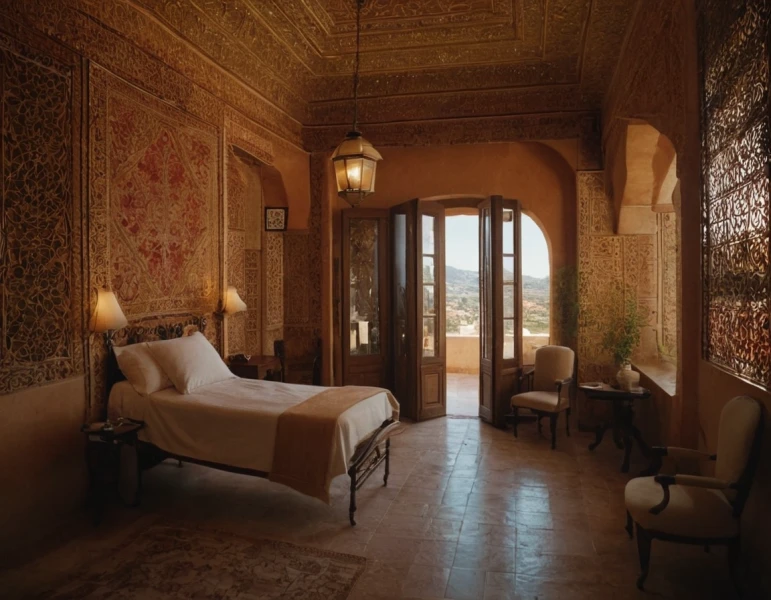Educa UNIVERSITY|HEALTH
Andalusian Health System: A Close and Realistic View
Related Masters
Andalusian Health System: A Close and Realistic View
To talk about the Andalusian Health System is like talking about that old machine which, although it sputters on some days, continues to work because there is no other. Throughout my life, I have had to deal with this system on multiple occasions, and what I am going to tell you here I have not taken from any official brochure, but from the real experience that you only acquire when you have spent years dealing with doctors, hospitals and that sometimes chaotic, but fundamental public service.
Let's get down to business, you will surely be interested to know how it works and what exactly the Servicio Andaluz de Salud (SAS) means for those of us who live here.
What is the Andalusian Health Service?

The SAS is the pillar of the Andalusian public health system, a sort of bureaucratic monster which, however, has a clear mission: to guarantee healthcare to the more than 8 million Andalusians. Sounds good in theory, right? Well, in practice, the SAS is responsible for managing everything related to healthcare in Andalusia, from primary care (your lifelong health center) to specialized hospital care.
This system is not new. It was born back in 1986 and has been evolving to offer quality healthcare services, with the aim of making them equitable and accessible to all citizens. In fact, they have a network of more than 1,500 health centers and 29 hospitals covering the entire territory.
But not everything is rosy. As in any public system, bureaucracy, cutbacks and management problems sometimes come between the patient and the care they really need.
Primary Care: The First Barrier
Primary care in Andalusia is the first level of access to the healthcare system. Ideally, this is where most of your health problems are solved. However, the reality is that, on many occasions, the system is saturated. And believe me, I have had to wait long hours in the waiting room of my neighborhood health center, watching how the staff juggles to attend to everyone.
Each health center has general medicine, nursing, dentistry and, in some cases, even rehabilitation services. But, if you happen to live in a rural area, you may find smaller medical practices, where the supply of services is more limited. This can be a problem, especially if you need more specialized care.
Medical Specialties: The Second Level of Care
The second level of the SAS is made up of specialists and hospitals. Here it is no longer the family doctor who takes the reins, but rather you enter specialist territory. From traumatologists to cardiologists, they are the ones who will see you if your problem cannot be solved in primary care.
In Andalusia, there are 50 public hospitals, some as well known as the Virgen del Rocio Hospital in Seville or the Reina Sofia in Cordoba. If I'm honest, I've had the good fortune and misfortune to go through both on more than one occasion, and although the professionals are excellent, the wait for an appointment with a specialist can be desperate.
But of course, when you finally get them to attend you, the quality of the doctors is unquestionable. The worst part is the process until you get there, which can be filled with bureaucracy, waiting lists and multiple calls.
Urgencies: The Art of Patience
The SAS is also in charge of emergency services, both in hospitals and health centers. Here I have to be honest: if you have to go to the emergency room, prepare patience. I have spent entire nights waiting to be attended, not because they do not want to do it, but because, simply, there are too many people and few resources. For more serious emergencies, the SAS has ambulances, medical helicopters and an emergency service coordinated through the famous 061, which works quite well, to be honest.
The Eternal Dilemma: Public vs. Private
Here in Andalusia, as in the rest of Spain, the public health system coexists with private healthcare. Often, due to the long waiting lists, people choose to go to private or subsidized centers. I myself have had to do so on occasion when I needed something faster. Although the SAS offers incredibly broad coverage, waiting times can be unbearable.
Budget: Where the Money Goes?
The Andalusian public healthcare is not cheap. The SAS budget in 2021 was more than 10 billion euros, with almost half of that money going to pay salaries. In recent years, there have been cuts that have affected both human resources and materials, which translates into fewer staff and less available means.
My Conclusion: Is it worth it?
After so many visits to hospitals, health centers, and experiencing firsthand the functioning of the SAS, I have to say that, despite the failures, the system works. It is not perfect, nor will it be, but it fulfills its function in a worthy manner. However, there is much room for improvement, especially in the management of resources and the reduction of waiting lists.
If you are thinking of using the Andalusian Health System, the best thing you can do is arm yourself with patience, but trust that, in the end, you will have care and, most importantly, that it will be of quality. And although you may sometimes criticize it, as I do, the truth is that when you really need it, it is there for you.
It's a good thing.
Faculties
Trainings
The faculties embrace diverse academic disciplines and fields of study, opening doors to new perspectives and exploring different spheres of wisdom in a constantly evolving world.














